NCAA Supplement Rules To Live By
15 April, 2024
Blog
Athletes Do Not Win on Protein Alone…
By: Bernie Wooster
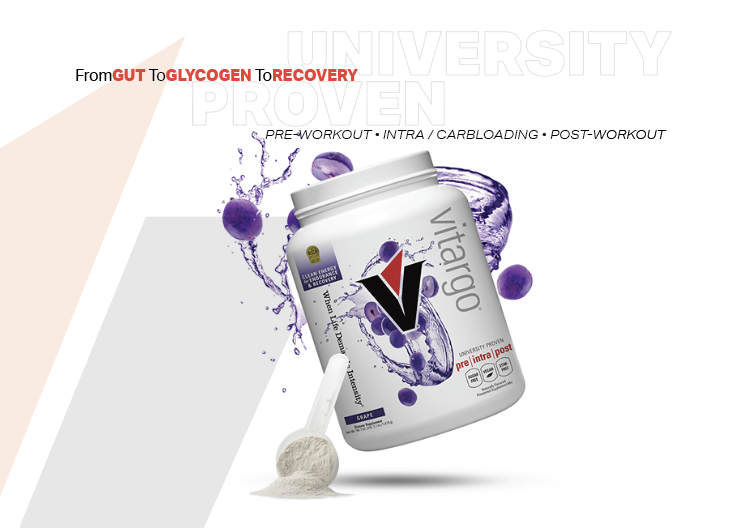
CARBOHYDRATES: Myths and Muscle Fuels
Textbooks and experts usually describe just two different types of digestible carbohydrates: simple (like sugars, honey) and complex (like starches from grains and potatoes). But then it starts to unravel.
They will then go on and say, Sugars enter the blood faster, while complex carbs enter the blood more slowly, for sustained energy.
Read familiar? It’s not that simple. it‘s partly WRONG, and largely UNPROVEN.
Intensive or prolonged training and competition have high carbohydrate demands as a major fuel source through either burning higher percentages of carbs over a shorter period of time or a lesser burn rate but over a longer period of time.
Carb burn rates range between 75-200+ grams/hour one can never burn more than about 50-60% of fat as a fuel at any respectable work rate1.
The major reserves of carbohydrate are in muscle and liver (stored as glycogen; gly-kuh-jen). Glycogen can be made from three sources: dietary protein (certain amino acids), lactate in the blood (produced during rest and exercise), and dietary carbohydrate.
The first two sources listed are inadequate to replace glycogen reserves after intense training. Dietary carbs that are digestible (fiber is a carb but largely indigestible) remain the predominant and most efficient precursor of body glycogen – the major fuel reserve in intense training.
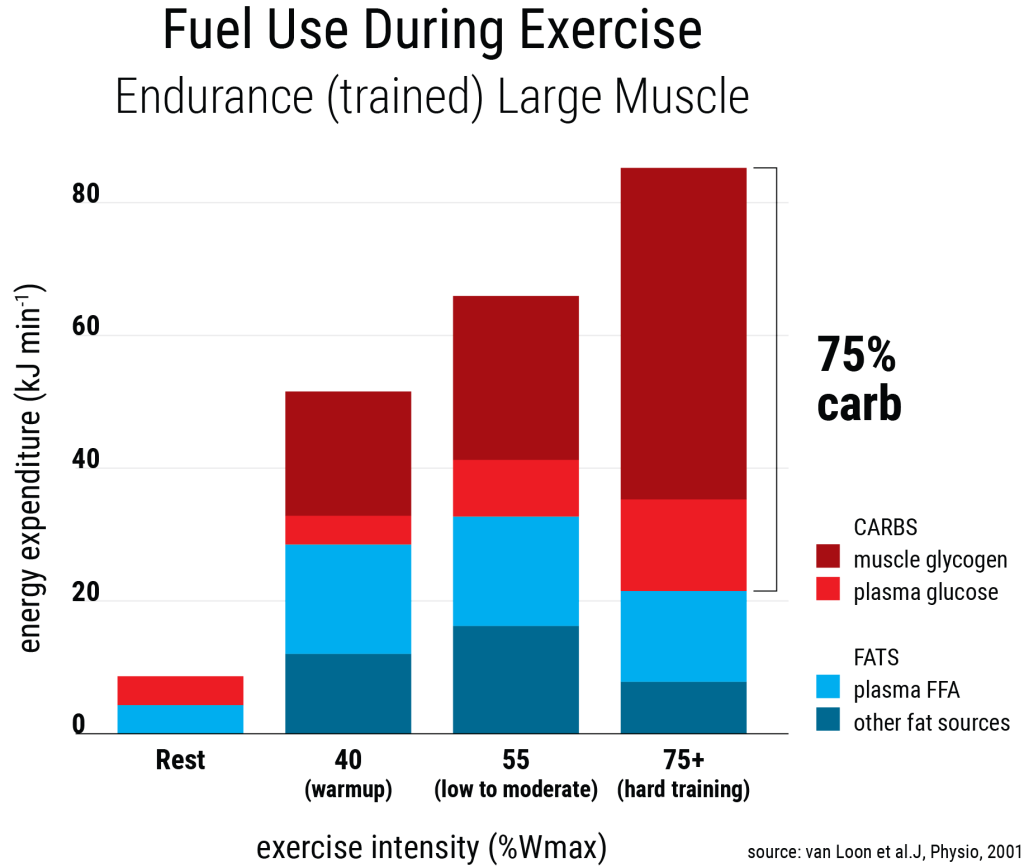
The Glycemic Index Myth: Higher is NOT Faster
In 1981 a measuring tool was born, comparing the blood sugar response of different foods: the glycemic index1. What spawned from low, medium, and high glycemic index (GI) foods was the grossly incorrect assumption that low glycemic meant slow absorbing and high meant fast absorbing.
Fact: GI ”the cumulative blood sugar value over a short time window, as a percentage of a reference carb source (dextrose or white bread) does not measure the speed of sugar entering the blood (nor does a blood sugar spike)2-4. GI (and blood sugar readings) simply reveal the net result of how sugar entered the blood (primarily from glucose absorbed from the intestine) minus how much exited the blood (primarily into liver and muscle) over a certain period of time.
In the first study that measured the speed of glucose entering the blood, a classic low glycemic food (All Bran® cereal) was shown to deliver glucose into the blood at the same rate as a classic high glycemic food: corn flakes cereal2 (fiber has minimal impact on glycemic index)2.
How can this be?
The speed of sugar entering the blood from the bran cereal was the same as corn flakes but the bran cereal sugar exited the blood faster (entering into tissues) in these fit, non-obese subjects3. This effectively drained the blood of sugar, rendering All Bran cereal low glycemic but as fast as a high glycemic food. Other studies have confirmed this with starch-based foods4.
Vitargo®: Bloat-Free Fueling and Recovery
Many avoid carbs for fear of spiking insulin, and yet are unaware that most protein sources, like whey protein isolate (especially hydrolyzed whey protein), have moderate to profound insulin spiking effects4,5. Even though dextrose (AKA glucose) is ready for digestion, it appears to be no faster than maltodextrin, a homopolysaccharide comprised of small chains of glucose molecules (AKA glucose polymers) and a small portion of sugars6-9. When maltodextrin was introduced in the 1970s it was considered a giant leap forward in carb fueling. And then something happened in Sweden twenty years later.
In the early 90s some athletes less than impressed with maltodextrin and sugars ”asked Swedish scientists if they could make a better carb, for recovery and performance.
Out of that request emerged Vitargo®.
Vitargo starts hidden within starch -the mother of all digestible, sugar-free carbs in plant foods – and is selectively pulled out as a unique, ultra complex amylopectin starch fraction (like pulling whey protein isolate out of whole milk).
Vitargo was first extracted from potato starch. Vitargo is a branched chain of about 3,500-4,000 glucose molecules, with zero sugars, zero maltodextrin.
But any carb’s size, chemistry, shape, or special processing means nothing until biology proves what it does in your (human) body
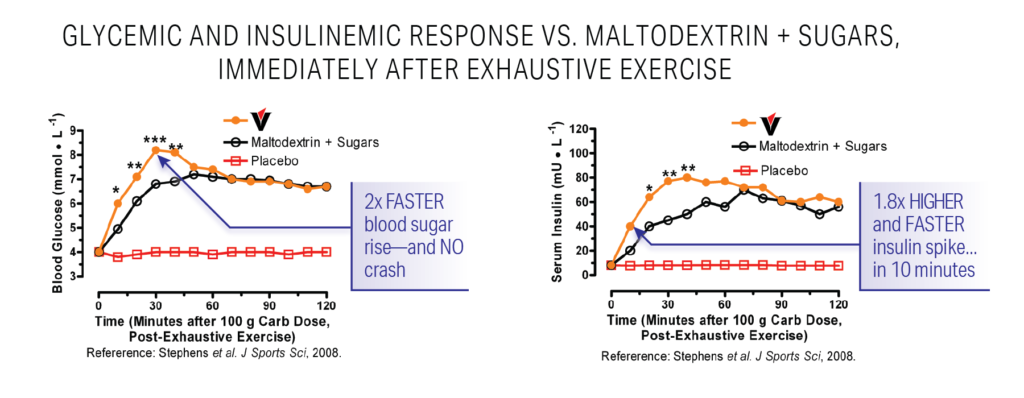
Proof Before Promises® – University Born
About 1 out of 1,000 nutrition products has ANY independent scientific evidence that the actual product works in humans, better than a placebo (or anything else). Vitargo is one of those rare products reinforced by multiple university studies, conducted in top research laboratories led by world class scientists.
The evidence showing Vitargo to be the Fastest Muscle Fuel links a critical metabolic sequence, unmatched by any other carb: from gut transit to glycemic response to glycogen recovery to recovery performance.
In each of these studies Vitargo was compared head-to-head against the fastest generic carb, maltodextrin:
• BLOAT-PROOF 2.3x faster movement through the stomach into the intestine, in just 10 minutes after a 75 gram dose11. So you can gulp (not sip) Vitargo pre-training/competition, or even intra (during) and not worry about bloating or seeing it again
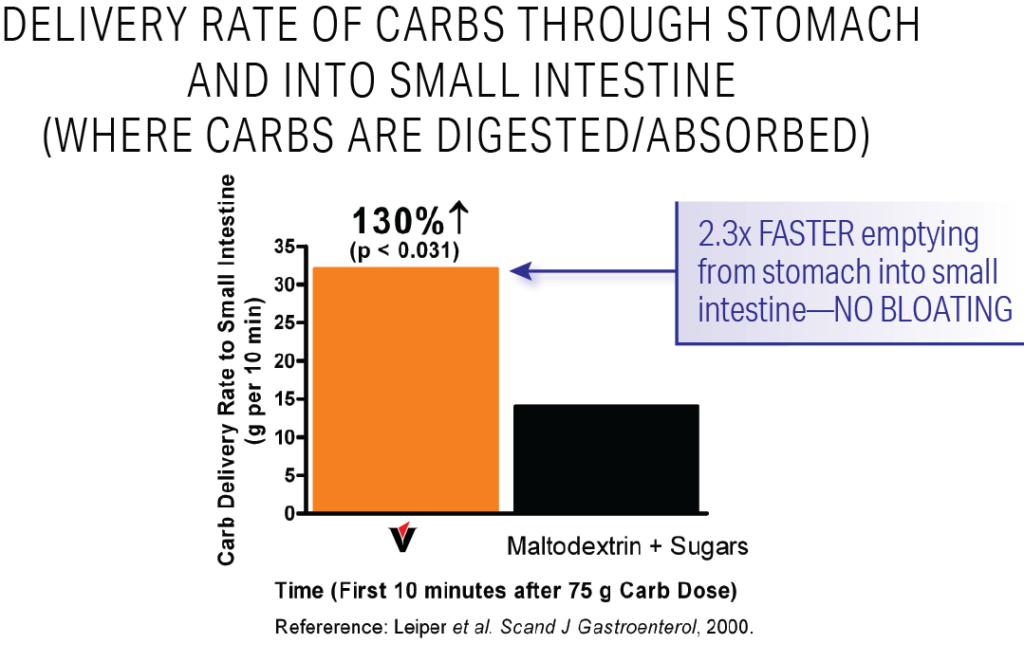
• GLYCEMIC SURGE, CRASH-PROOF Just 10 minutes after a 100 gram dose of Vitargo, the speed of blood sugar (glycemic) rise is 2x faster, with no glycemic “cliff dive”12. Fuel your brain and your muscles faster, without carb crashing.
• GLYCOGEN SPEED Intense exercise, of any type, relies on muscle glycogen as the major fuel source, even under low carb/low glycogen conditions1,13,14. Two hours after exhaustive exercise, Vitargo led to 1.7x higher and faster muscle glycogen replacement15. Part of this may be due to the 1.8x higher and faster insulin spike just 10 minutes after taking it12. It’s not how high/fast is the glycemic (or blood insulin) response but how high/fast are muscle carbs (glycogen) being replaced after intense training or competition. Vitargo is fantastically suited for carb loading, due in part to it moving so quickly through the gut.
• SAME DAY RECOVERY What does recovery mean? You do an intense, glycogen-depleting training session, followed by just 2 hours of rest. With Vitargo as your immediate post-training carb, you would be able to crank out up to 23% more (10% average) maximal endurance work over 15 minutes, just two hours after pounding your muscles into submission11.
That’s real world, measurable recovery – recovery performance, not just “I think I feel recovered”. Using more than ˆ 20 grams of protein alone after intensive training causes the extra protein to be burned as an energy source or excreted16,17 or converted into sugar (glucose), an expensive way to replace glycogen.
In a university pilot study, Vitargo alone worked as well as Vitargo plus a whey protein blend, for intense, resistance leg training acute recovery performance18 (but we DO advocate taking Vitargo with protein AFTER intense training or competition 75 grams of Vitargo plus 20 grams of whey protein.
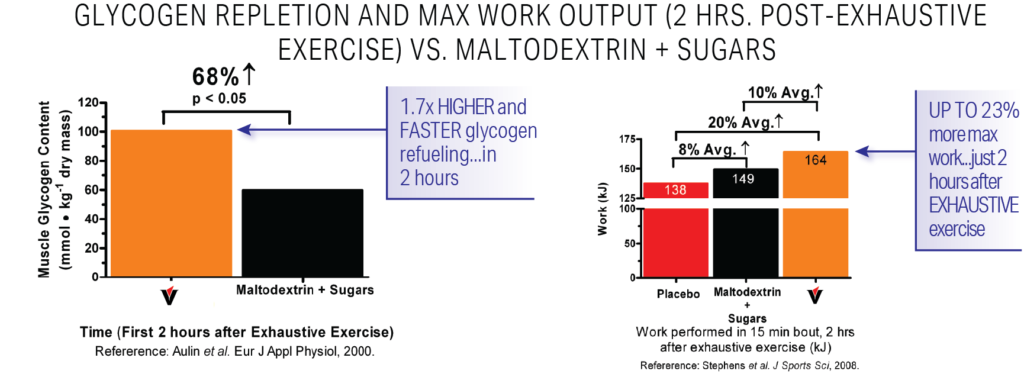
Vitargo — The PERFECT Mixer… ANY time
• PRE/Before: 2.3 x faster movement through the stomach into the intestine, in just 10 minutes after a 75 gram dose11. Gulp Vitargo and train hard and don’t worry about bloating or gut rot
• INTRA/During: Gulp it during training or competition (for bloat-free fueling). Studies at rest show 2x faster blood glucose response times (than maltodextrin) in 10 minutes12
• POST/After: Two hours after exhaustive exercise, Vitargo led to 1.7x higher and faster muscle glycogen replacement15. But who can feel muscle glycogen being loaded into muscle? You do a bout of intense, glycogen-depleting training or competition, followed by 2 hours of rest.
With Vitargo as your immediate post-training carb, you would be able to crank out up to 23% more (10% average) maximal work, just two hours after pounding your muscles into submission12. We call that Same Day Recovery recovery performance, not just “I think I feel recovered”.
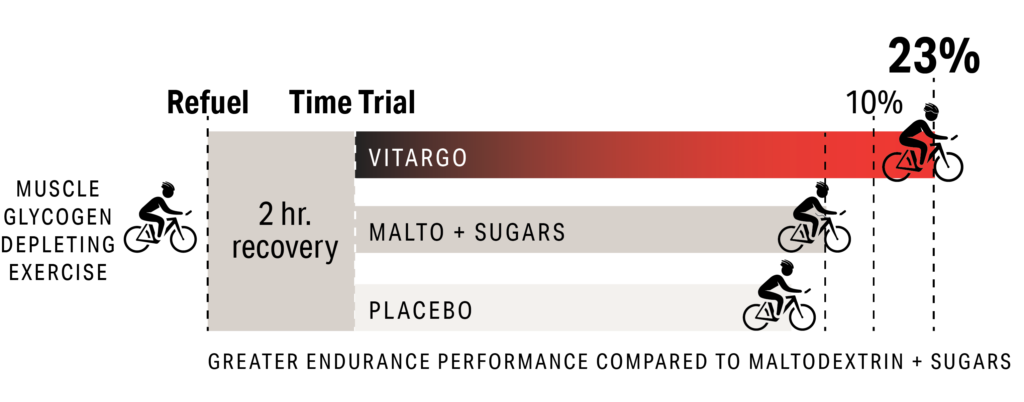
Vitargo may make almost everything else work better.
Mix up Vitargo with your favorite protein source and take right after a hard session or competition event. Add in your favorite pre, intra or post supplements like creatine monohydrate; BCAAs, protein, electrolytes, etc.).

What NOT to mix with Vitargo? Any other food, drink, or supplement that provides more than 10 grams of carbs (why mix jet fuel with low octane pump gas?).
When you mix Vitargo correctly ”it’s easy, just follow the directions it will stay mixed and clump-free for up to 5-7 days in the refrigerator, ready to be gulped. You can mix Vitargo half or full strength, or even as concentrated as a pudding or gel (1-3 oz of water for every scoop or 35 grams).
NOTE: Vitargo comes in a Plain version that is taste-neutral, and mixes well with ANY flavored supplements you’re looking to stack it with.
Banned Substances and Gluten Tested on EACH batch
We are obsessive. Every batch, of every flavor is tested (after cGMP manufacturing) for banned substances (we have since our first batch) by the most experienced lab in the world found by the late Dr. Don Catlin, former director of the US Olympic Drug Testing Laboratory, and led by his son, Oliver Catlin. Form more on the BSCG, click here.
That’s not enough.
Vitargo is extracted from non-GMO starch. We test EACH batch, EACH flavor (after GMP manufacturing), for gluten using a state of the art method called ELISA.
Few brands goes this far every flavor, every batch, every time. And Vitargo is also VEGAN zero animal ingredients.
Proof Before Promises®
- 1) van Loon LJC, et al. J Physiol 2001;536:295 304.
- 2) Jenkins DJA, et al. Am J Clin Nutr 1981;34:362-6;
- 3) Schenk S, et al. Am J Clin Nutr 2003; 78(suppl):742 8.
- 4) Eelderink C, et al. Am J Clin Nutr 2012;96:1017 24
- 5) Pal S, Ellis V. Br J Nutr 2010;104:1241 8.
- 6) Morifuji M, et al. J Agric Food Chem 2010;58:8788 97.
- 7) Sole CC and Noakes TD. Eur J Appl Physiol 1989;58:605-12.
- 8) Takii H, et al. Int J Sports Med 2005;26:314-9.
- 9) Leese GP, et al. Eur J Appl Physiol Occup Physiol 1995;71:306-10.
- 10) Vist GE, Maughan RJ. J Physiol 1995;486.2:523-31
- 11) Leiper JB, et al. Scand J Gastroenterol 2000;35: 1143-9.1
- 12) Stephens FB, et al. J Sports Sci 2008;26:149-54.
- 13) MacDougall JD, et al. Can J Appl Physiol 1999;24:209-15.
- 14) Churchley EG, et al. J Appl Physiol 2007;102:1604-11.
- 15) Piehl Aulin, et al. Eur J Appl Physiol 2000;81:346 51.
- 16) Moore DR, et al. Am J Clin Nutr 2009;89:161 8.
- 17) Witard OC, et al. Am J Clin Nutr 2014;99:86-95.
- 18) La Bounty P, et al. J Int Soc Sport Nutr 2009;6(Suppl 1):P13.
featured blogs



